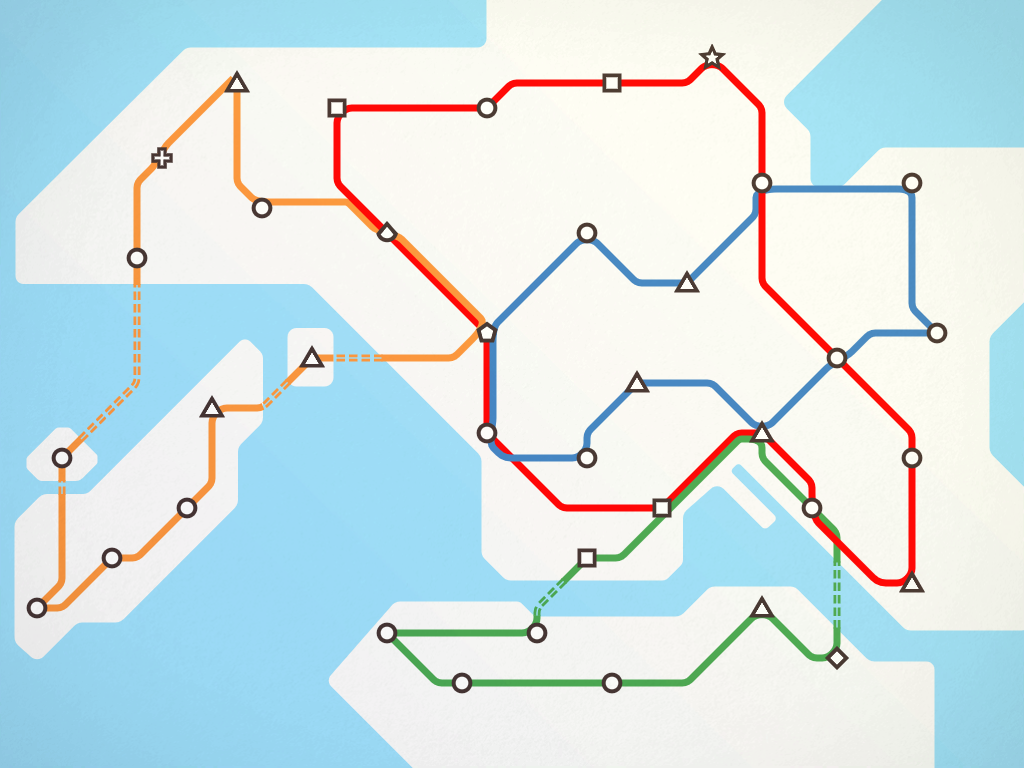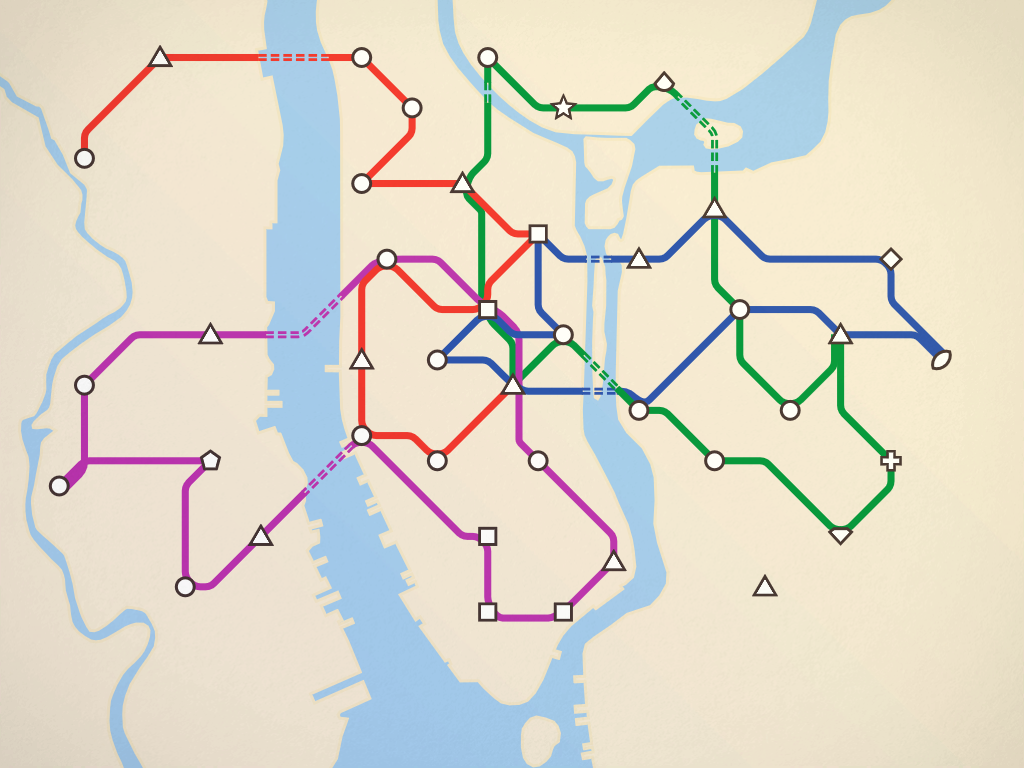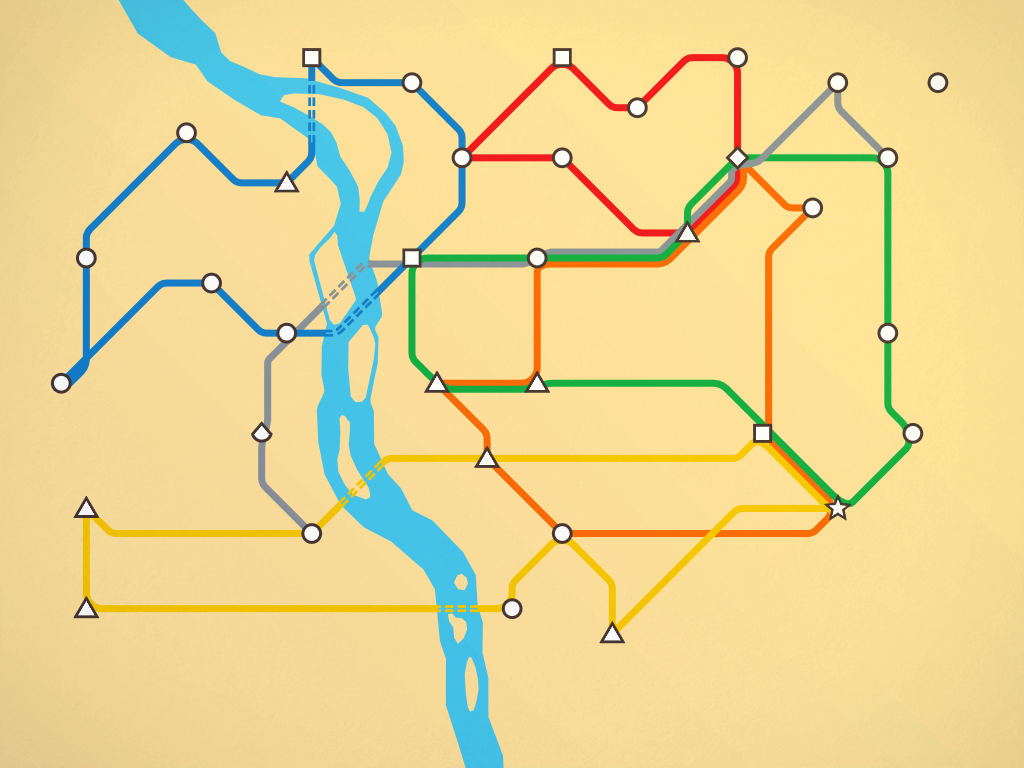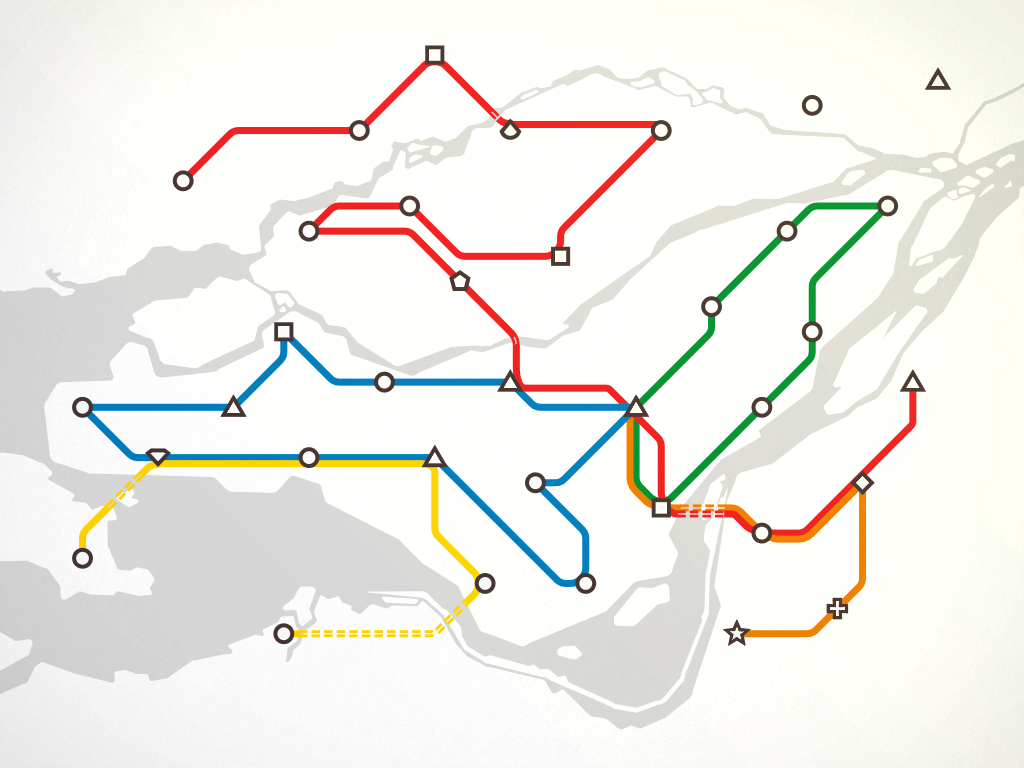Commuter mode is generous in this, because you can redraw or even remove whole lines at will, which is something I quite often end up doing when a new station appears in an awkward location. The tougher Rush Hour mode doesn't allow this, meaning once you've laid down track and connections, they're there to stay. You can also enjoy the Scenic mode, which doesn't have a fail state, including switching to it after losing one of the other modes, which is a nice touch.
You also have the option to take a screenshot of your network when a game ends, forming your own little collection of subway maps. A collection of mine are below, some of which you'll see are more plausible and coherent than others... along with a bit more about the actual gameplay.
In the end, it was the upper-right circle station linking the red and blue lines that got overcrowded, I think probably because of star passengers being offloaded by the blue line. Two stations on the orange line were close to collapse as well - orange line was too long, and I didn't have enough trains and carriages to serve it.
It was the red line circle station in the north, just after it splits from the green line, that got overwhelmed. I think I couldn't get enough trains running there to get people out of that part of the red line quick enough.
It was the blue + grey circle station on the east bank that ended it - too many passengers sat there trying to get to the unique station just to the south. I'm not entirely sure why only the grey line is serving that. Of course, it's always possible that these end-game screenshots are actually showing a panicky reconstruction of a very different network, as I try to improve things by tearing out and changing lines around the overcrowded stations. Maybe that unique station was being served by other lines, but I was responding to some other problem and unwittingly left it out in my redesign. That's also why you can see the unconnected circle in the top right - I simply hadn't got round to connecting it yet.
It was a red circle station that got too full, not surprising if you look at the ridiculous length of the line. I'm not sure why I didn't trim it back and leave the orange line, already quite short, to handle the eastern stations.
I've had a lot of fun with Mini Metro, and the interface as you drag out and reposition track and trains is just wonderful. Suitable for quick, tense games in Commuter or Rush Hour, or ponder and tweak details as you try to put together a perfect network in Scenic mode - and you get a lovely little map at the end of each game. What's not to like?






 RSS Feed
RSS Feed